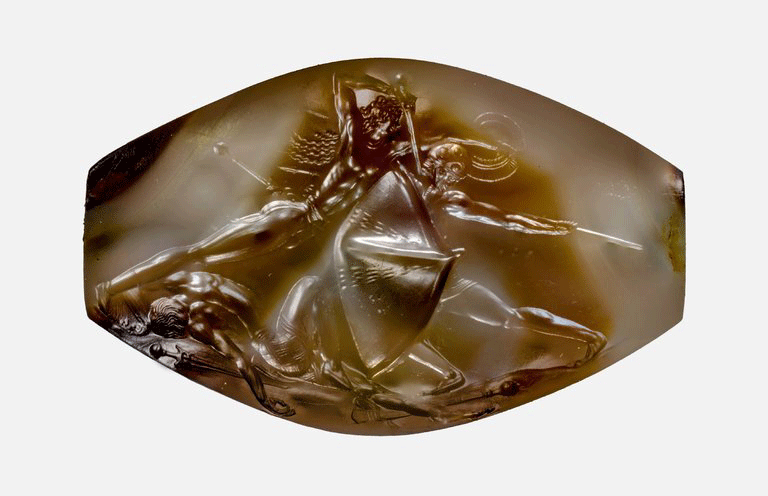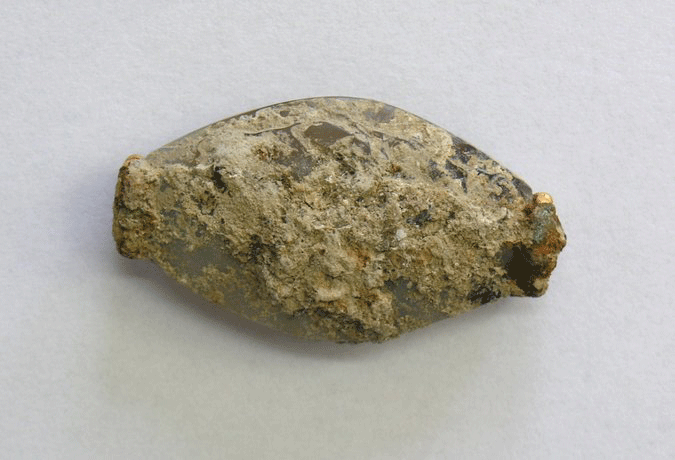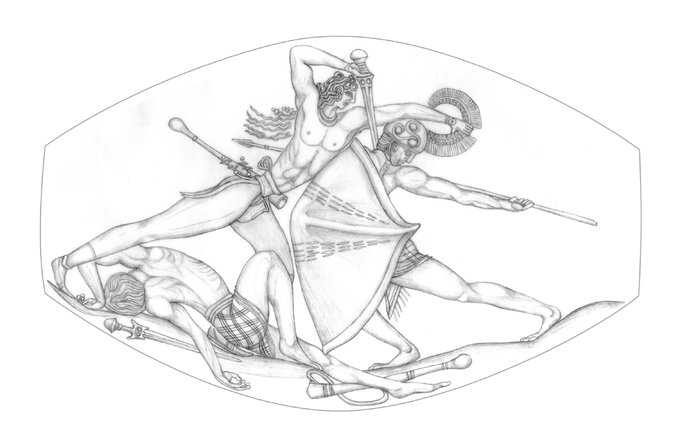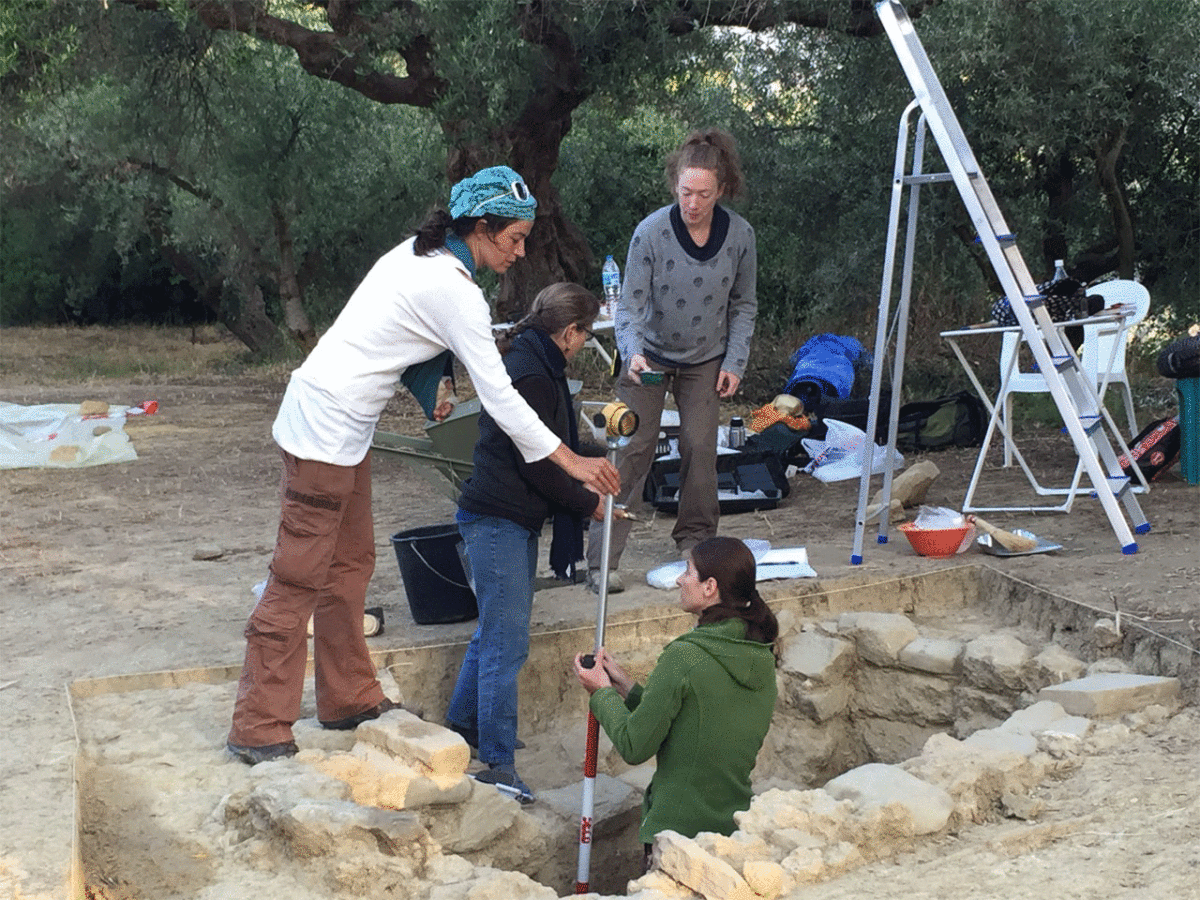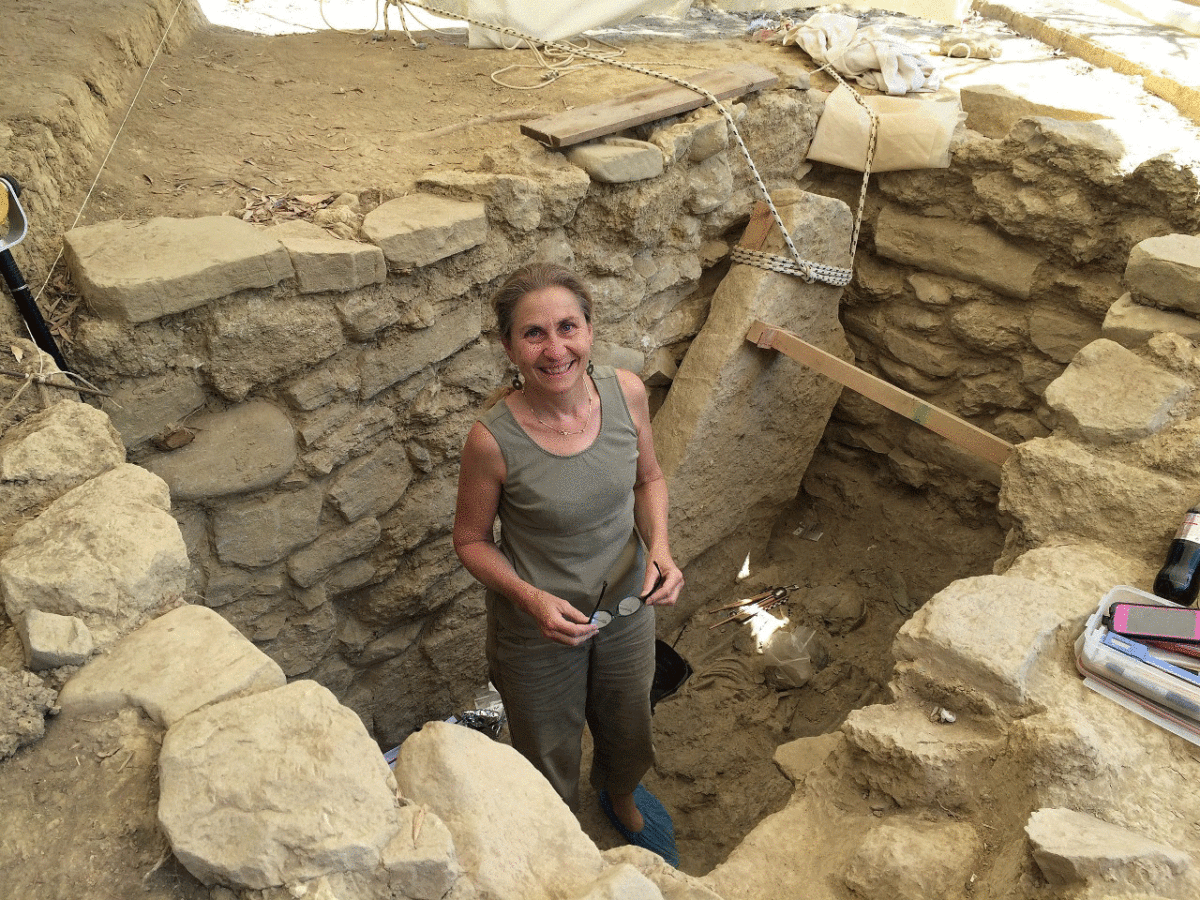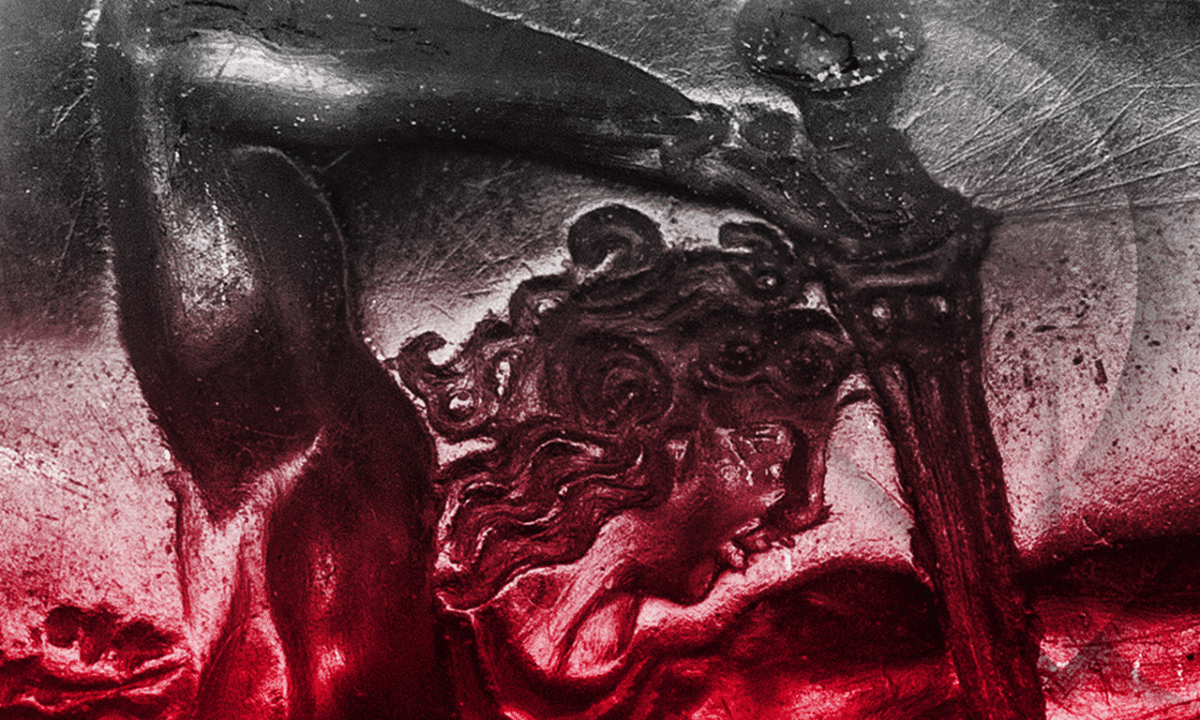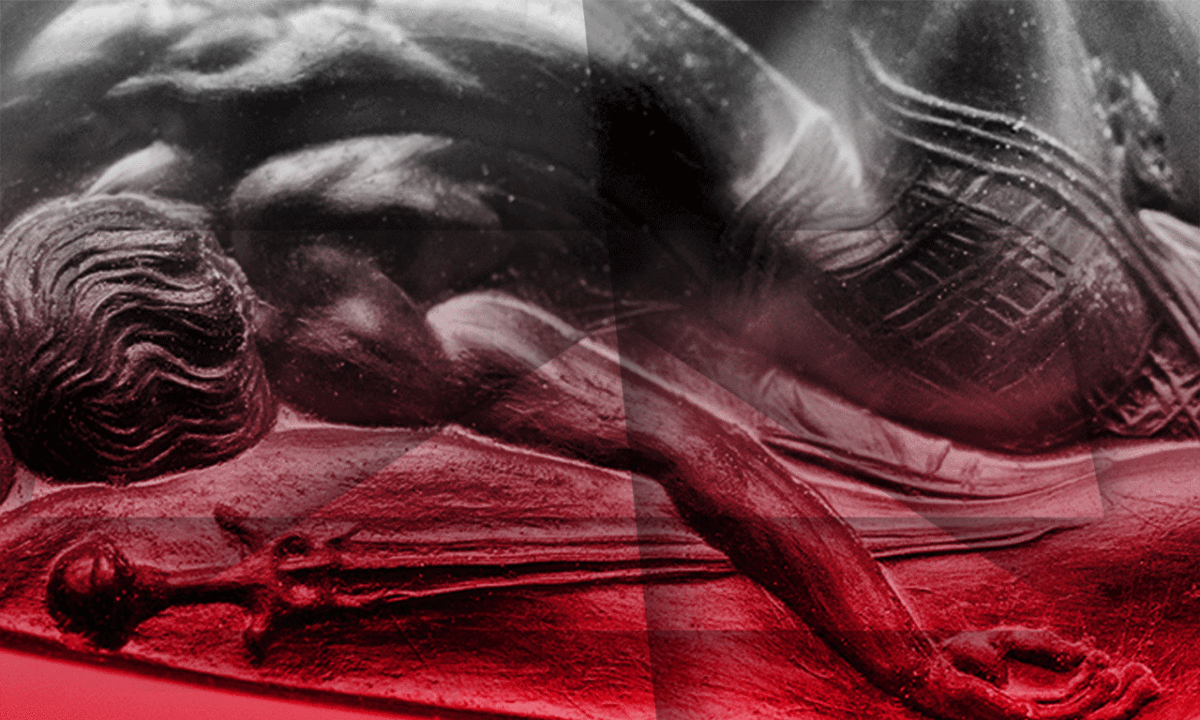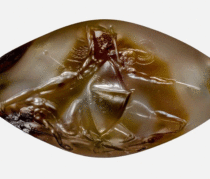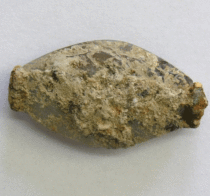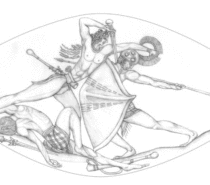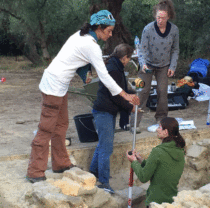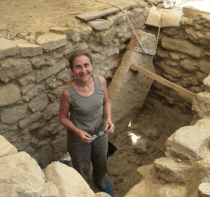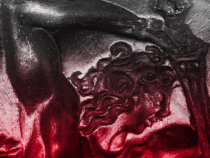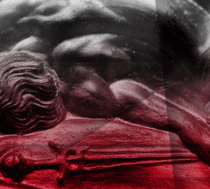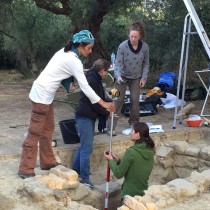Archaeologists present a miniature seal stone with a combat representation of remarkable detail from the Griffin Warrior grave in Pylos, Greece. The item was found two years ago during excavations at the site, where many valuable artefacts were discovered. The seal was initially covered with lime accretions, so the archaeologists took it for a bead and put it aside to be conserved later. When the lime was removed the artefact turned out to be a seal stone with a striking depiction of a warrior in battle with two others. The detail of the carvings is astonishing, with certain features barely visible to the naked eye. The stone, which measures only 3.6 cm, is carved on a hard stone known as agate, hence it is called the Pylos Combat Agate. It is mounted so that it can be worn on the wrist.
The grave was discovered in May 2016 by Jack L. Davis and Sharon R. Stocker, archaeologists at the University of Cincinnati, who had been working at excavations in Pylos for over 25 years. The Archaeologists believe that the seal stone, like other artefacts found in the grave in Pylos, was made on Crete, since the quality of the work could not be found in other places at the time, namely around 1450 BC. After all, it was a common practice for local chieftains to use precious items from Crete to advertise their membership in the Greek-speaking elite of the incipient Mycenaean civilisation, the first on mainland Europe.
John Bennet, director of the British School at Athens said the seal is a masterpiece of miniature art, while Malcolm H. Wiener, an expert on Aegean prehistory and trustee emeritus of the Met said that the artefact is one of the greatest masterpieces of Aegean art.
The seal stone puzzles archaeologists as to how and why it was engraved in such detail, as well as whether the event depicted is one that contributed to the oral tradition behind the works of Homer.
According to Davis, some of the details are only half a millimetre big. The archaeologists argue that the human body is represented at a level of detail and musculature that is not encountered until the classical period of Greek art, 1,000 years later.
According to Fritz Blakolmer, an expert on Aegean art at the University of Vienna, the seal stone is a miniature copy of a much larger original. Perhaps the original was a wall painting similar to the ones found at the Palace of Knossos on Crete. He also argued that the engraver must have used a magnifying glass to perform the carving.
The image on the stone represents a hero slaying an opponent and a third warrior lying dead in the foreground. The hero is wearing an item similar to the seal itself, like a wristwatch. The two defeated warriors wear the same patterned kilts, whereas the hero is wearing a codpiece.
It cannot be said with certainty that the event represented contributed to the Homeric epics, but perhaps the oral tradition that led to the epics stretched for over seven centuries. The image is part of a cycle of stories familiar to both Mycenaeans and Minoans.
The presentation of the seal was made in the journal Hesperia.
